Handling customer inquiries can be overwhelming, especially when your support team is constantly swamped with repetitive questions. This not only drains resources but also slows down response times, leading to frustrated customers.
But what if there was a way to deflect common queries and reduce the load on your team?
That’s where case deflection comes in. By encouraging users to find answers on their own through self-service options, you can free up your team to focus on more complex issues.
This time around, we’ll showcase key case deflection strategies that can help reduce repetitive inquiries and improve customer satisfaction.
Reduce support tickets and improve customer experience with Tidio
What is case deflection?
Case deflection is a strategy used by customer service teams to reduce the number of support inquiries that require direct agent involvement, or rather, to avoid case creation. Instead of users submitting tickets or reaching out for assistance, case deflection encourages them to find answers on their own using self-service resources such as FAQs, knowledge bases, chatbots, or community forums.
The goal is to empower customers to resolve common or straightforward issues independently, minimizing the workload on support teams and improving overall response times.
Case deflection works by providing customers with easy access to relevant information before they consider contacting support. When implemented effectively, it can significantly reduce incoming support requests while maintaining a positive user experience.
For example, if a user is about to submit a ticket, the system might suggest relevant help articles or FAQs that directly address their query. By solving the issue before it reaches a support agent, case deflection not only saves time for the team but also ensures that customers can find quick solutions to their problems. In turn, this creates a sense of independence and boosts client satisfaction.
Before we move on, let’s take a look at one important distinction—
Case deflection vs. self-service
Case deflection and self-service are closely related concepts in customer support, but they serve different purposes.
Customer self-service refers to the tools and resources provided to users upfront. These resources, such as FAQs, knowledge bases, and chatbots, allow users to resolve their own issues. In other words, it offers customers direct access to solutions before they need to engage with the support team.
On the other hand, case deflection happens when a user is in the process of reaching out for help, and the system redirects them to self-service resources before escalating the issue to an agent. Case deflection usually occurs at the moment a customer attempts to submit a ticket.
In short, self-service is about providing customers with independent resources from the start, while case deflection steps in when users seek—or attempt to seek—direct assistance, guiding them to solve problems on their own.
| Aspect | Case deflection | Self – service |
|---|---|---|
| Timing | Reactive—occurs when a customer is about to submit a query | Proactive—offered as the first option for finding solutions |
| Purpose | Reduces incoming tickets by suggesting solutions mid-process | Provides users with the tools to resolve issues independently |
| Implementation | Triggered when customers initiate contact with support | Available at all times through FAQs, knowledge bases, etc. |
| Customer interaction | Occurs when the customer intends to contact support | No direct support interaction unless needed |
| Goal | Deflect tickets to reduce support team workload | Empower customers to find solutions on their own |
Case deflection types
Case deflection comes in different forms, all aimed at helping customers solve their problems on their own before reaching out to a support team. It’s a smart way to reduce the number of tickets coming in while still keeping your clients happy. But the key is knowing which type works best for your business.
Let’s dive into the most common types of case deflection and how they can make a big difference in streamlining your support process.
Explicit deflection
Explicit deflection happens when customers are directed to self-service options before submitting a support request. For example, a pop-up might suggest helpful articles when a customer starts filling out a contact form or opening a ticket.
Another example is a chatbot that provides immediate solutions or links to FAQs as soon as a user asks a question. The goal is to offer assistance right when the customer needs it, preventing them from creating a ticket.
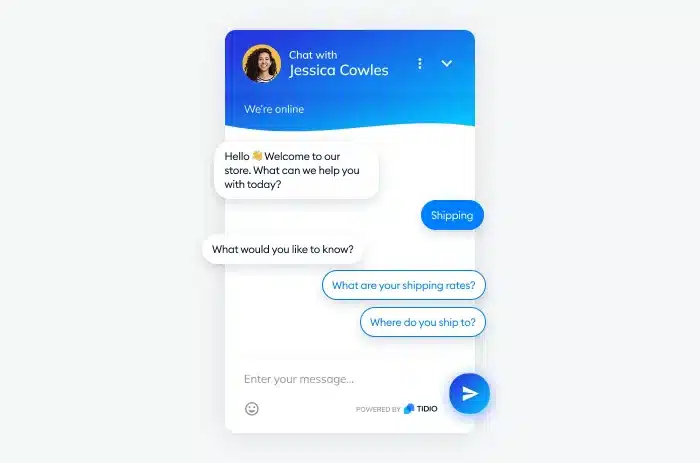
Implicit deflection
Implicit deflection is more subtle, focusing on using a self-service strategy through resources so easy to find that customers naturally turn to them without even thinking about contacting support.
This could involve well-organized help centers, FAQ sections, or community forums that are easily accessible from your home page and every other important part of your website. Unlike explicit deflection, implicit deflection relies on clients discovering the resources on their own, reducing the likelihood of them reaching out for help in the first place.
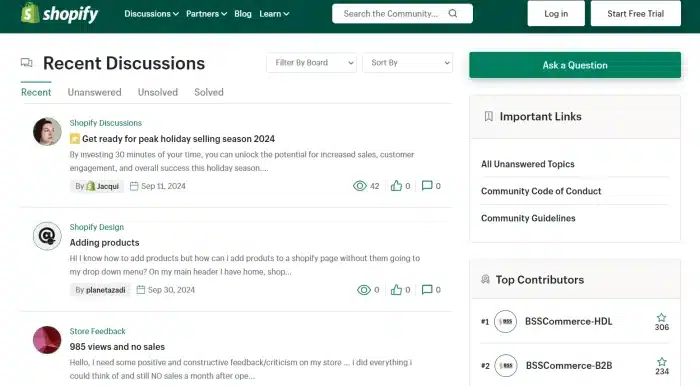
So, this deflection type guides customers toward self-service resources in such a seamless way (through clear navigation, in-product help, or search suggestions) that they don’t even feel the need to contact support.
In that sense, implicit deflection can be almost described as self-service, but with the goal of steering customers towards solutions without them realizing they are being “deflected.”
How to measure case deflection
Measuring case deflection involves two stages: deflection attempts and successful deflections. These help you see how often your strategies are offered and how effectively they prevent support tickets.
Deflection attempts track how often resources like help articles, chatbots, or FAQs are shown to customers. Monitoring when these resources appear, such as when a customer is about to submit a ticket, helps ensure they are visible and relevant.
Successful deflections measure how often these attempts prevent a ticket. This happens when a user solves their issue through self-service content without needing further support. You can track this by seeing if customers viewed the content and didn’t submit a ticket afterward.
But let’s explore this in even more detail.
How to calculate case deflection rate
Measuring case deflection can seem challenging at first since users don’t always explain when they find a solution and leave your website. However, there are specific activities, like reading helpful articles or starting to submit a support request, that can provide insight.
Now, generally speaking, there are two common ways to measure this metric.
The first method involves tracking when a user visits your knowledge base, searches for answers, reads relevant articles, and leaves without submitting a support ticket. This indicates that the user found what they needed without requiring further assistance.
To measure case deflection this way, you can use this formula:

The second method occurs when a customer begins to log a support case, and as they start typing, they are shown related articles. If the customer clicks on the article links, reads the content, and then abandons the form, it’s another successful example of case deflection.
For this scenario, the formula is:

The higher your case deflection rate, the more effective your system is at resolving issues before they turn into support tickets. By comparing rates over different time periods, such as month-to-month, you can gauge how well your strategies are working. If your rate is low, it may be time to explore ways to improve.
Here are the strategies you can use to do just that.
Tips and strategies to boost case deflection
Boosting case deflection requires strategic planning and the right tools to ensure customers can solve their issues without needing to contact support teams.
Here are the most effective tips to enhance your case deflection rates:
1. Build a comprehensive knowledge base
A robust knowledge base is crucial for enabling customers to find answers to their questions without contacting support. Make sure it covers a wide range of topics and includes clear, well-organized articles with step-by-step instructions, images, and videos
Regularly update your knowledge base to include new questions or issues that arise, and categorize knowledge articles based on common problems. This ensures customers can easily search and find solutions on their own, thus deflecting cases early in the process.
Here’s a use case example of Tidio’s knowledge base which contains comprehensive documentation and self-help articles to get you started:
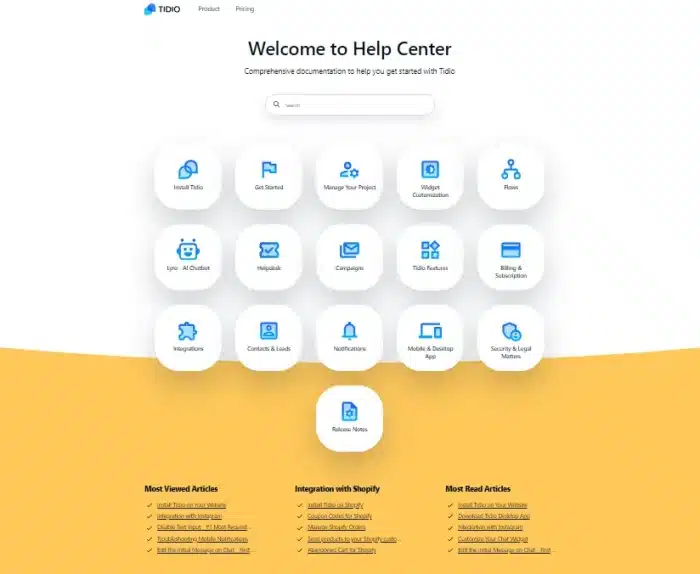
2. Implement self-service tools
Empowering customers to find answers on their own is one of the most effective ways to reduce the need for support and improve their overall self-service experience. Instead of always reacting to customer inquiries, you can get ahead by offering proactive self-service options. By guiding users to the right resources, you allow them to solve issues on their terms, saving time for both them and your support team.
Take the FAQ chatbot powered by Tidio. This tool instantly provides users with answers to their most common questions without needing to wait for a live agent, streamlining the entire support process and helping deflect cases effortlessly.
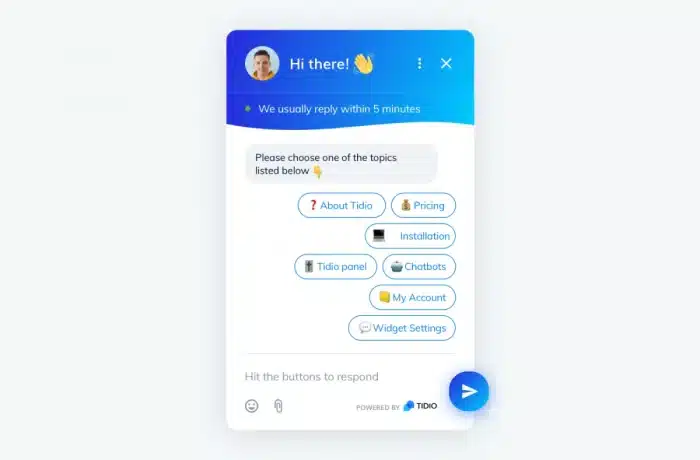
Read more: Check out the best FAQ software you can use for your business.
3. Use AI chatbots to provide instant support
When properly trained, AI chatbots answer common questions in a conversational manner, guide users through troubleshooting, and direct them to helpful resources—significantly reducing support requests as a result.
Make sure your chatbot connects with your knowledge base and can escalate complex issues to human agents. It should also collect key information before handing off the case, ensuring the agent is prepared to resolve the issue quickly.
Tidio’s Lyro AI is a great example of a chatbot capable of fully supporting your self-help processes. All you need to do is connect Lyro to your existing FAQ page, and you’re all set. That being said, there’s also the option to add all answers to most commonly asked questions manually.
In addition, Lyro comes with the functionality to automatically transfer users to a human operator in case a more complex answer is required, speeding up issue resolution and enhancing overall customer satisfaction.
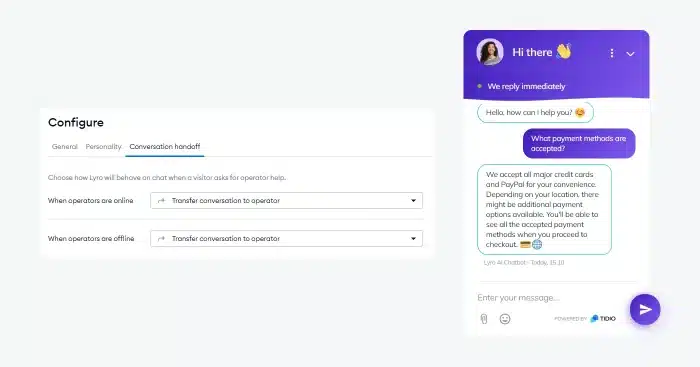
Read more: Learn how Suitor managed to hit 85% of customer service automation with Lyro.
Improve your case deflection techniques using Tidio
4. Leverage proactive support
Instead of waiting for customers to encounter problems, offer proactive support by identifying common pain points and addressing them before they become issues. Use customer data and analytics to spot trends in behavior or frequent queries, and provide solutions before customers need to ask.
You can offer proactive pop-ups, automated emails, or on-site suggestions that direct users to your knowledge base, FAQs, or chat flows before they submit a ticket. This preemptive approach not only reduces support requests but also improves the overall customer experience.
For instance, you can set up a chat flow that activates when a customer lingers on a product page for too long. If the system detects that a user has been idle, it can trigger a message saying, “Do you need help finding the right product?” and provide links to relevant FAQs, a knowledge base, or even an offer to connect with a live agent.
This proactive chat flow reduces the chances of the customer abandoning the page and helps guide them toward a solution before they submit a ticket.
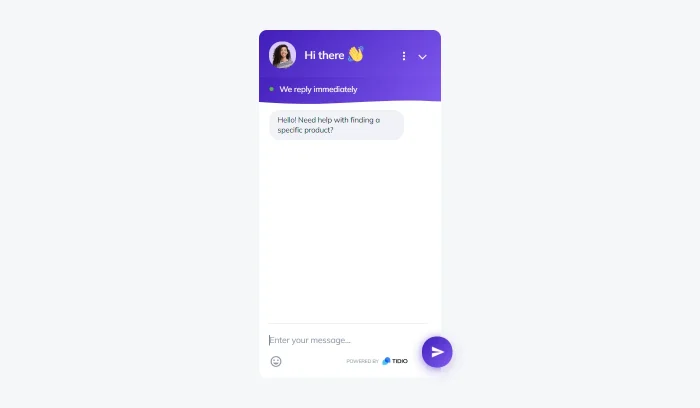
Read more: Learn all you need to know about proactive customer service.
5. Optimize search functionality
To help customers find solutions on their own, you need a strong search function that delivers relevant results quickly.
You can improve your search tool with natural language processing (NLP) so customers can ask questions naturally, without relying on specific keywords.
An optimized search tool should prioritize the most relevant articles, making it easier for customers to get the answers they need and reducing support requests.
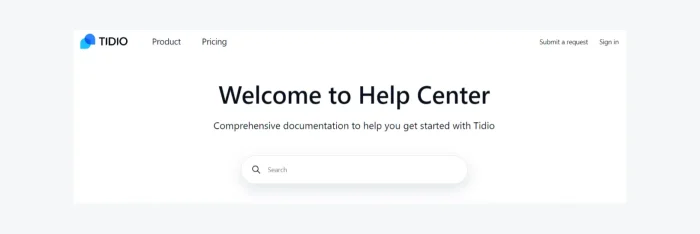
Read more: Find out all you need to know about NLP chatbots.
The impact of case deflection
Implementing case deflection strategies can have a significant positive effect on your business. By encouraging customers to use self-help options, you not only reduce the workload on your support team but also improve the overall customer experience.
Here are some of the key benefits:
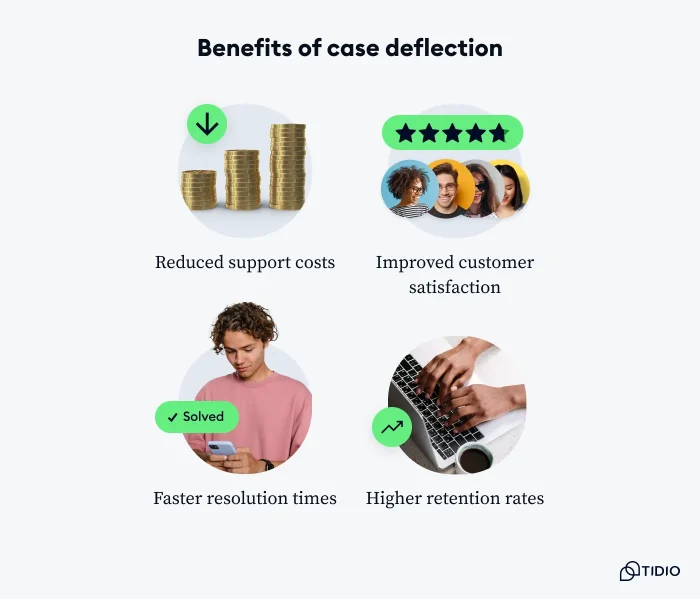
- Reduced support costs — fewer incoming tickets mean your team can focus on more complex customer issues, lowering operational expenses. An effective case deflection rate of around 58% is often seen as a strong benchmark, as it reflects a high level of customer self-sufficiency. As such, it can lead to significant cost savings by minimizing the number of tickets that require human intervention.
- Improved customer satisfaction — quick access to solutions through self-service makes customers feel empowered and valued, leading to higher CSAT score. In fact, as many as 70% of customers use self-service to solve their problems.
- Faster resolution times — customers are able to quickly find the information they need without waiting for support, which leads to quicker issue resolution. For example, Forcepoint reduced time-to-resolution by 25% thanks to consistent information being available across various user experiences, allowing customers to resolve issues independently.
- Higher retention rates — satisfied customers are more likely to remain loyal, increasing long-term customer retention.
Read more: Find out key customer service metrics and KPIs.
Create successful case deflection strategies with Tidio
Case deflection is a smart way to reduce the number of incoming support requests by empowering customers to find solutions on their own. Through self-help resources like knowledge bases, helpful articles, and real-time suggestions during ticket submission, businesses can lighten their support load while still providing excellent customer care.
Tidio makes case deflection even more effective. With its powerful flows, proactive chat support, and AI chatbots, Tidio enables you to deliver fast and accessible self-service to customers and answer their most common questions.
Take Tidio for a spin and try out the tool’s robust self-service options as soon as today!
Improve your case deflection techniques using Tidio

